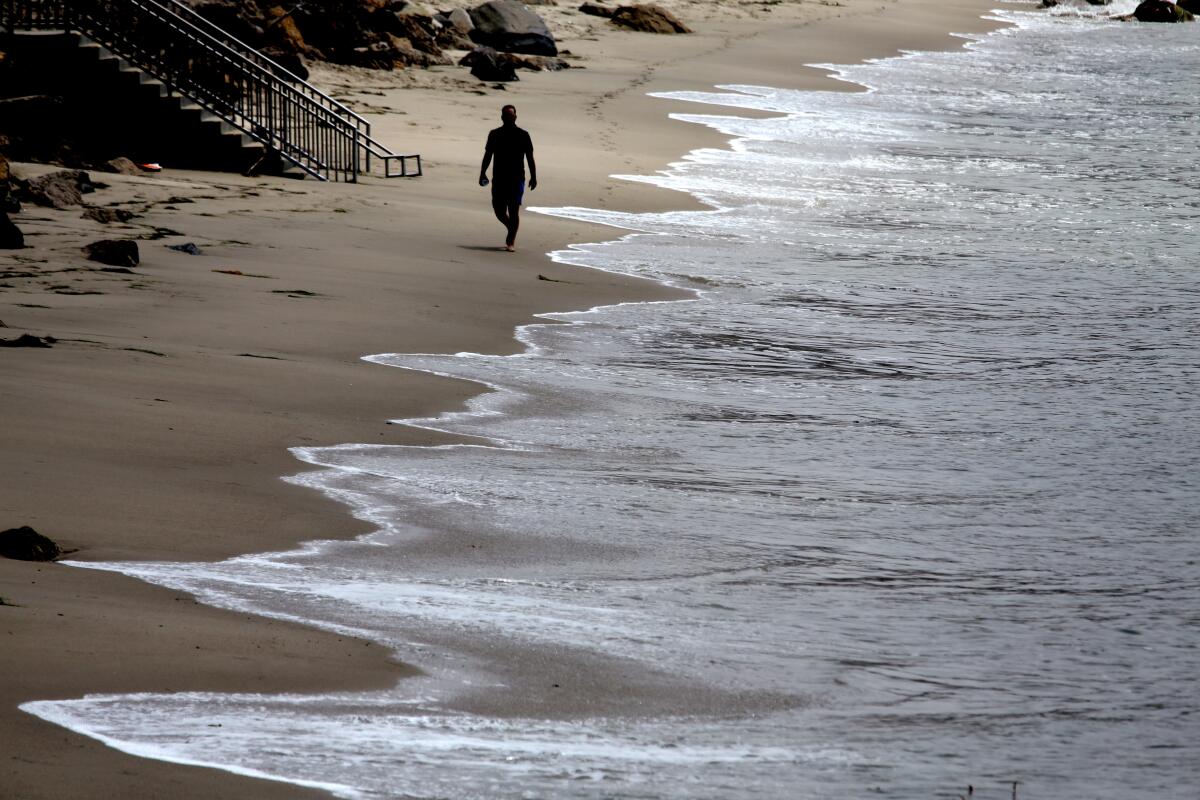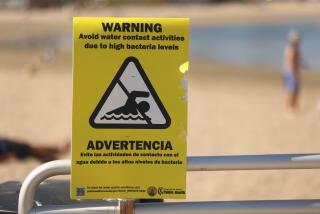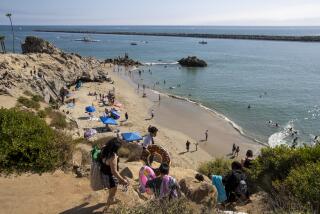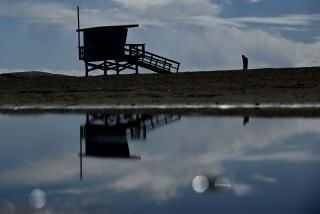Avoid the bacteria-tainted water at these Southern California beaches this holiday weekend

A day at the beach is probably on the schedule for many Californians this week, especially with a heat wave baking the region on a long Fourth of July weekend.
But surfing, splashing or swimming at some of Southern California’s most popular beaches could result in severe illnesses due to high levels of bacteria in the water, officials say.
The Los Angeles County Department of Public Health has issued ocean water use warnings for about a dozen beaches and multiple piers with bacterial levels that exceed health standards.
Here’s a list of beaches and piers in Malibu, Santa Monica, Long Beach and Orange County that are under advisory for high bacteria levels.
California has some of the most polluted beaches in the U.S., according to the Surfrider Foundation’s 2023 Clean Water Report.
The report identified 10 beaches from coast to coast that consistently measured high levels of bacteria, three of which are in California: Linda Mar Beach in Pacifica, San Luis Creek Mouth in San Luis Obispo and Imperial Beach in San Diego.
Imperial Beach has been closed for more than two years due to toxic water from the Tijuana River watershed. The ocean shoreline from the Tijuana Slough National Wildlife Refuge to the California-Mexico border is also closed due to cross-boundary flows.
Here’s a list of beaches in San Diego that are under advisory or closed for high bacteria levels.
Bacteria levels can increase when contaminated runoff enters the ocean after significant rainfall, or untreated sewage is released into the water. A multimillion-gallon sewage spill in Carson in 2022 closed down all beaches in Long Beach among others in Los Angeles County and Orange County.
Trash, pet waste and fecal contamination from sea birds and ocean mammals can also push the levels of harmful microorganisms in the ocean to potentially unsafe levels, said Becky Schlikerman Sernik, spokesperson for the Los Angeles County Department of Public Health.
The most common illness after swimming in polluted water is gastroenteritis, which typically occurs after swallowing bacteria-contaminated water, Sernik said. Symptoms include nausea, vomiting, stomachache, diarrhea, headache and fever, according to the U.S. Environmental Protection Agency. Children, the elderly and people with weakened immune systems are most vulnerable to gastroenteritis.
The heat wave that has engulfed California will last through at least Tuesday of next week, with triple-digit temperatures expected in much of Northern and Central California, and highs of 85 to 95 degrees in Southern California’s inland coastal areas.
The National Weather Service has issued an excessive heat warning due to severe health risks.
More to Read
Sign up for Essential California
The most important California stories and recommendations in your inbox every morning.
You may occasionally receive promotional content from the Los Angeles Times.











